Article MT259
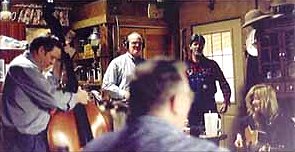
The NAT Series on MT Records
An introduction, by Mark Wilson
For almost forty years, several collaborators and I released album projects on the Rounder label, under the sponsorship of Bill Nowlin (and, less directly, of his partner Ken Irwin). After 1999, our loose group began releasing these CDs under the heading of 'The North American Traditions Series'. None of us were ever paid for this work, but we were usually provided with travel expenses and good recording equipment. Most importantly, the Rounder sponsorship allowed us to approach traditional artists with an offer of a product they could call their own, in addition to small monetary advances and whatever limited royalties those records might earn. 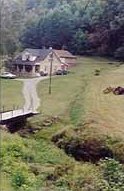 Such assurances greatly reduced the ever-present fears of exploitation and usually allowed us to plan our projects in close consultation with our artists. To be sure, we always tried to emphasize local and endangered material over more common fare, a fact that worried some of our musicians in the early years. Today some of those same recordings have allowed younger musicians in those same regions to reclaim some of their pioneer heritage and so we rarely encounter such criticisms any longer.
Such assurances greatly reduced the ever-present fears of exploitation and usually allowed us to plan our projects in close consultation with our artists. To be sure, we always tried to emphasize local and endangered material over more common fare, a fact that worried some of our musicians in the early years. Today some of those same recordings have allowed younger musicians in those same regions to reclaim some of their pioneer heritage and so we rarely encounter such criticisms any longer.
To be sure, not everything worked entirely smoothly in those long years. Rounder gradually became a successful commercial label and many of its employees did not understand why Bill and Ken continued to support such low sales projects as ours. Nor did we find much support from the academic folklore community (which I, at least, could have greatly used at various points along the way). Things became truly grim from about 2003 on, when the bottom dropped out of the CD market almost overnight. In fact, Rounder itself was sold to Concord Records early this year (2010), although Bill and Ken still work there. At present, many of the projects we compiled are either no longer in print or are available only in greatly attenuated forms (e.g. as individually downloadable MP3s with none of the original accompanying documentation). I greatly regret these truncations, for I firmly believe that traditional music is best appreciated if it is understood in terms of the people and societies that have produced it. Rod Stradling has kindly stepped into the breach to re-release some of our orphaned Rounder CDs on Musical Traditions, as well as various projects containing unreleased materials as time permits. Some of our NAT projects (mainly some of the earlier CDs with booklets less than 30 pages in length) are still available from Amazon.com on a 'print upon demand' basis in more or less their original contours. Largely for that reason, we do not plan to reissue those particular records on MT at present.
Although I served as overseeing editor on all of these projects, most of this work could not have been accomplished without working closely with a truly admirable group of local experts, in particular, John Harrod and the late Gus Meade in Kentucky, Gordon McCann in the Ozarks, Lou Curtiss in California and Morgan MacQuarrie in Cape Breton. In addition, many of the artists we recorded helped out greatly in introducing us to other local performers. 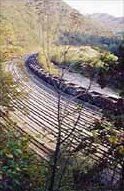 I might especially mention in this regard J P and Annadeene Fraley, Buddy Thomas, Roger Cooper, Gordon MacLean, Doug MacPhee, Theresa Morrison, Vince MacLean, Bob Holt and Dwight Lamb. The best part of this whole endeavor was getting to know this wonderful group of people.
I might especially mention in this regard J P and Annadeene Fraley, Buddy Thomas, Roger Cooper, Gordon MacLean, Doug MacPhee, Theresa Morrison, Vince MacLean, Bob Holt and Dwight Lamb. The best part of this whole endeavor was getting to know this wonderful group of people.
Finally, I'd again like to extend my warmest thanks to Bill Nowlin for making this collection of recordings possible. Without his continuing support, much of the material we recorded would have been lost forever or, at best, preserved only in low fidelity forms. Bill and Ken Irwin are rarely given credit for their services to traditional music (most hagiography of Rounder focuses largely upon their commercial and revivalist projects), but it is surely the equal of what Moe Asch accomplished at the original Folkways Records.
In 1999, when we began releasing projects under the 'North American Traditions Series' banner, I wrote a little essay trying to explain its purpose. At the time, I was convinced that our direct access to the American musical past was rapidly being lost and I was rather frantically scouring for resources to see more of it preserved. That anxiety accounts, I suppose, for the somewhat preachy qualities of the essay. All the same, it can probably serve as an adequate introduction to our Musical Traditions releases as well.
The North American Traditions Series: Its Rationale (1999)
Over the past thirty years, several regionally based collaborators and I have recorded a wide range of American and Canadian traditional music, generally under the sponsorship of Rounder Records. The fundamental objective behind all these projects has been rather simple: to document, in as appealing manner as possible, the various forms of social music that once gave much pleasure to the rural populations of North America. Since this music and the personal stories associated with it are wonderfully idiomatic and appealing, the recordings can stand on their own aesthetic merits easily enough. However, various factors have contributed to deep misunderstandings of the setting for this kind of music, matters I will try to address in this orientational essay.
Up to now, these recordings have been scattered throughout the massive Rounder catalog and were not previously designated as belonging to an integrated series of recordings. Taken as a whole, however, these recordings provide a rather unique portrait of the condition of North American traditional music and in this essay I will try to highlight some of the particular concerns that have shaped our recording work.
The proper significance of the term 'folk music':
 Originally, the term 'folk music' and its cognate, 'folk tale', were introduced in the early nineteenth century by scholars like the brothers Grimm as a means of labeling forms of music that were transmitted by the 'folk process' - that is, where the musicians learn the bulk of their repertories from local sources through oral transmission rather than from written or recorded sources. Just as importantly from the viewpoint of musical psychology, a 'folk musician' typically expects to find his or her audience locally as well - a fiddler strives to play for the local dances, not to appear in vaudeville or the concert hall; a singer's ambitions reach only as far as singing for her children or for fellow miners during a lunch break. This basic modesty of intent is closely connected, in my opinion, with much of the music's charm.
Originally, the term 'folk music' and its cognate, 'folk tale', were introduced in the early nineteenth century by scholars like the brothers Grimm as a means of labeling forms of music that were transmitted by the 'folk process' - that is, where the musicians learn the bulk of their repertories from local sources through oral transmission rather than from written or recorded sources. Just as importantly from the viewpoint of musical psychology, a 'folk musician' typically expects to find his or her audience locally as well - a fiddler strives to play for the local dances, not to appear in vaudeville or the concert hall; a singer's ambitions reach only as far as singing for her children or for fellow miners during a lunch break. This basic modesty of intent is closely connected, in my opinion, with much of the music's charm.
In contemporary culture, however, a rather bizarre string of factors have caused the phrase 'folk music' to lose its original significance and turned it into a label for a particular variety of middle-class popular music exemplified by Joan Baez and Nanci Griffith. Whatever the aesthetic merits of this latter performance style - and there are many - it possesses an almost null overlap, either musically or culturally, with the music we wish to highlight in the NAT series.
Unfortunately, the semantic shift in 'folk music' has created a situation where a form of music that has given joy to working people for centuries can now barely find a home in the modern record store simply for want of a reasonable label. Thus at Amazon.com, the phrase 'traditional folk music' now designates groups like the Kingston Trio (which seems like a cruel prank to play upon those of us who have tried to maintain the original meanings of these words over the years). One would have hoped that the recent explosion of interest in 'roots' or 'world' music might have taken our orphaned form of music under its wing, but this is not the case because such categorization invariably excludes North American music of Anglo/Irish/African heritage and most of those 'roots' recordings are not performed by traditional musicians either, but by regional analogs of, say, a Nanci Griffith.
Approaching somewhat closer to the music heard in the NAT series, there are a fair variety of recordings available, usually on small labels, but with a goodly number included in the Rounder catalog, of younger musicians from non-folk backgrounds that attempt to replicate, to varying degrees of exactitude, the kind of music found in our series. As one who likes to fiddle a bit himself, I am cheered by the vigor of these enthusiasts, but it is an unfortunate fact that these efforts sometimes have the inadvertent effect of pushing genuine traditional music into even deeper obscurity (rather, I'm afraid, as the 'cover' recordings of Pat Boone temporarily eclipsed Little Richard's originals). Indeed, because the 'revivalists' are usually better equipped to promote themselves successfully, one often encounters a situation in Appalachia today where 'folk festivals' are largely dominated by these groups, even if excellent traditional musicians may live nearby. 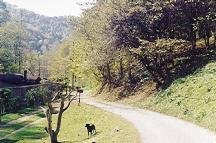 To my ears at least, the music of the revivalists has become rather ingrown, for they learn mainly amongst themselves, and frequently lacks the virtues that supply genuine traditional music with its special elan. For example, the fiddle playing one often hears in these circles ranges from the bland to the pointlessly frenetic, interpretations that all grow from a failure to appreciate the intrinsic subtleties of the American dance tradition (I've heard more than one puzzled traditional player characterize these efforts as "hippy fiddle music").
To my ears at least, the music of the revivalists has become rather ingrown, for they learn mainly amongst themselves, and frequently lacks the virtues that supply genuine traditional music with its special elan. For example, the fiddle playing one often hears in these circles ranges from the bland to the pointlessly frenetic, interpretations that all grow from a failure to appreciate the intrinsic subtleties of the American dance tradition (I've heard more than one puzzled traditional player characterize these efforts as "hippy fiddle music").
More and more, however, one this is the kind of music one hears as representative of 'American folk music', for instance, as background music to some PBS historical documentary. As best we can, we have tried in our notes to alert our readers to the many venerable nuances of traditional technique that get missed in the reinterpretations.
So one of our reasons for organizing the North American Traditions Series as we have is simple cultural justice: the 'folk' deserve to have their music heard in its proper contours, not filtered through several levels of interpretative remove.
Two examples of the historical import of this music:
Much, although by no means all, of our series is devoted to capturing older forms of dance music as it is still remembered by contemporary fiddlers who have acquired their core repertories through the 'folk process'. It has not been sufficiently recognized, I think, how important this music is to the proper understanding of American popular music, particularly the manner in which our native music has been shaped by interactions between different strata of society. Fiddle music as we now find it is not simply an antiquated stock of tunes carried here from the British isles; instead, it is composed of many layers that reflect major historical shifts in the musical sensibilities of this country. In this way, a careful study of the music found here can contribute to a better understanding of how our popular music has developed, even for those who are not interested in fiddle music for its own sake. Let me articulate two examples of why this is so.
If one reads much contemporary 'roots'-centered musical criticism, one finds a lot of interest in reconstructing what black instrumental music might have like in the days before recording equipment was available. Because ragtime, blues and jazz emerged from the nineteenth-century black dance tradition, one is quite curious to know what this music might have sounded like. 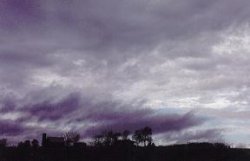 One finds much speculative musing on this subject, but much of this literature strikes me as wildly distorted and romanticized. Most of the performers in our series are older white musicians of Anglo-American stock that were raised in rural areas before the advent of electrification. It has not been sufficiently appreciated, I believe, how rich a story these people can tell us about the history of earlier forms of black music. But, in fact, the information they provide strongly suggests a long history of an ongoing musical evolution driven by a productive cooperation between the races. The true history of the roots of ragtime and so forth turns out to be vastly more nuanced than the unsubstantiated fantasies of the commentators suggests.
One finds much speculative musing on this subject, but much of this literature strikes me as wildly distorted and romanticized. Most of the performers in our series are older white musicians of Anglo-American stock that were raised in rural areas before the advent of electrification. It has not been sufficiently appreciated, I believe, how rich a story these people can tell us about the history of earlier forms of black music. But, in fact, the information they provide strongly suggests a long history of an ongoing musical evolution driven by a productive cooperation between the races. The true history of the roots of ragtime and so forth turns out to be vastly more nuanced than the unsubstantiated fantasies of the commentators suggests.
Limited access to outside culture typical of a mountain farm in the 1930s kept some of the older forms of music from fading away as quickly as elsewhere. It is this very conservatism that allows us to hear, at the end of the twentieth century, important stages through which social music had earlier passed. A fact that has frequently surprised me is the degree to which many of our musicians possess very long memories about how music used to sound and where it came from. One of the most intriguing musicians in our series is Owen 'Snake' Chapman, a fiddler in his late seventies from Canada, Kentucky. Snake knows as many melodies as any fiddler I have ever met, ranging from very old tunes learned from his father to modern 'bluegrass' fare. Growing up in an isolated mountain hollow, Owen developed an astonishingly accurate ear for the nuances of a fiddle tune and can diagnose very sharply the manner in which the playing of certain popular fiddle tunes have evolved over his own lifetime. Among all of the melodies Snake plays, the most astonishing are the tunes he learned as a boy from his elderly father, 'Doc' Chapman, who had been born in 1851 (Doc's own father, according to family tradition, split logs with Abraham Lincoln before the family resettled in Kentucky). Snake can still picture his father's playing in his mind's eye and reproduce it, pointing out its many special features. To hear Owen play a melancholy old melody like Rock Andy gives one the eerie sense of having a little window open before one directly onto the nineteenth century. And the lyrics that have been passed along with Rock Andy only increase ones sense of historical penetration:
Ole Massa sol' me
Speculator bought me
Took me to Raleigh
To learn how to rock candy
('Rocking Candy' was an old slave dance; in Snake's family, it has become transmogrified to 'Rock Andy'.) Verses like this were reported in antebellum reports of slave 'corn huskings' (see Roger Abrahams' Singing the Master for contemporaneous reports of these activities).  Musically, Rock Andy - and almost all the other tunes that 'Doc' Chapman played - seem sui generis to nineteenth century America: they represent musical forms that unlike anything familiar in either Scots-Irish tradition or contemporary Southern fiddling. Rather we seem in Rock Andy to witness the emergence of a new transitional strain in music, born on American soil through the cooperation of black and white musicians.
Musically, Rock Andy - and almost all the other tunes that 'Doc' Chapman played - seem sui generis to nineteenth century America: they represent musical forms that unlike anything familiar in either Scots-Irish tradition or contemporary Southern fiddling. Rather we seem in Rock Andy to witness the emergence of a new transitional strain in music, born on American soil through the cooperation of black and white musicians.
Much recent musical criticism (for example, Robert Cantwell's influential book When We Were Good) assumes that black/white musical exchange was mainly induced through the popularity of the minstrel show. Careful attention to tunes like Snake's suggests the opposite: that a very distinctive strain of American melody was created through direct exchange between the social groups, a tradition upon which the minstrel shows occasionally cannibalized. Insofar as I can see, Cantwell's misapprehensions are largely the artifact of conducting ones research largely in the library rather than the field. The contemporaneous written sources found in libraries (like newspapers) will often comment on the advent of an extensive touring company like a minstrel show, whereas the local farmers' dances will rarely be mentioned at all. One of the North American Tradition Series' primary objectives is to collect reliable information from our great living dance musicians before the knowledge they possess is lost - before one of our most important windows onto American music of the last century closes forever.
Jumping forward a generation in musical time, Gordon McCann and I have met many fiddlers out in the Missouri Ozarks who register a later developmental stage in the black/white musical interchange. Rural white musicians there still play raggy melodies like Funky Butt, which is the primary strain in the early ragtime classic St Louis Tickle as well as one of the earliest tunes that Jelly Roll Morton remembered, Buddy Bolden's Blues ("I thought I heard Judge Fogarty say/Funky butt, funky butt, take him away"). What seems to have happened is that these folk tunes, probably originating in the 1880s era before fully developed ragtime composition commenced, first drifted into urban areas like Springfield and Joplin and were subsequently carried back to rural communities like Blue Eye by fiddlers like Ray Curbow who continue to play these pieces to this day. Already in these tunes one hears the swingy syncopation that distinguishes classical ragtime composition.
How did these musical exchanges come about? Many of our informants, even in regions of the Appalachian South where the black population was always small, tell us of the days when black fiddlers were regularly called upon to play for white dances. The most salient fact about the social dance context is that it allowed musicians to absorb a large amount of the other culture's music without violating social mores.  Talking to our source musicians has brought home to us an appreciation of the great difficulties that a novice 'folk' fiddler often encountered in wanting to learn music without the assistance of a score or tape recordings; it often happened that the musician that one most wished to emulate was a passing stranger that one would never hear again. The luxury of being able to hear a novel tune played at great length - fifteen minutes or more - by an African-American at a public dance was a great boon to the budding musician and undoubtedly served as one of the most important means by which new music spread across the South. This transmission pattern, as much as anything, explains why the old nineteenth century tunes are so well remembered by our present day rural populations and why so much black/white musical exchange is evident in this music.
Talking to our source musicians has brought home to us an appreciation of the great difficulties that a novice 'folk' fiddler often encountered in wanting to learn music without the assistance of a score or tape recordings; it often happened that the musician that one most wished to emulate was a passing stranger that one would never hear again. The luxury of being able to hear a novel tune played at great length - fifteen minutes or more - by an African-American at a public dance was a great boon to the budding musician and undoubtedly served as one of the most important means by which new music spread across the South. This transmission pattern, as much as anything, explains why the old nineteenth century tunes are so well remembered by our present day rural populations and why so much black/white musical exchange is evident in this music.
In such contexts, of course, the music played by a black orchestra needed to satisfy the expectations of the dancers and accordingly emulated white models fairly closely. In many cases - see John Harrod's notes to our Traditional Fiddle Music of Kentucky, Vol. II (Rounder 0377) - black fiddlers are known to have maintained a somewhat distinguished repertory of bluesier tunes (some of which are also remembered by our informants). But even in these cases, the evolution of nineteenth century fiddle music was subtle and does not conform to the glib 'derived from Africa' preconceptions one often finds in the 'roots' literature.
The objectives of the North American Traditions Series:
In my opinion then, the fact that we still possess a good number of gifted players who can still perform this music constitutes a minor historical miracle. Unfortunately, it is probably true that we are near the end of this long tradition, since most of the players I know who possess locally based repertories grew to adulthood before the advent of rural electrification (which did not reach some regions of the South until the early 'fifties). The sudden influx of outside music that came in with the electric lines seems to have immediately relaxed the dependence upon local sources that typically characterizes the transmission of true traditional music.
What I find especially sad is that, for a variety of reasons, our society is allowing these performers to fade away without trying to adequately document either their music or the stories behind them. As a college teacher myself (although in a non-contiguous field), I have been disheartened by the attitudes current among professional folklorists who, because of unhappy intellectual trends in academia, often regard honest recording work as mildly contemptible. Thus the folklore unit at a university where I recently taught found it far more worthwhile to probe the attitudes - they call them 'social constructions' - towards 'things Irish' of the middle-class burghers of Dublin, Ohio rather than spend any time capturing the old fiddle tunes that can still found in the countryside. 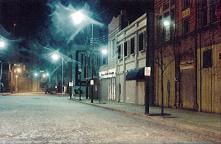 The exact rationale for this strange focus eludes me. Many of the professional folklorists with whom I've talked clearly labor under the false impression that in some library somewhere there already exists an adequate repository of American fiddle music. This is not the case at all - our libraries possess very spotty and haphazardly gathered materials, collected by individuals who usually lacked preparation for dealing with instrumental music adequately (this is true even of giants like Alan Lomax). The written records are even more incomplete and the scholars who persist in studying only these rather than interviewing living fiddlers often frame quite faulty hypotheses about tune transmission, as we witnessed in the Cantwell case.
The exact rationale for this strange focus eludes me. Many of the professional folklorists with whom I've talked clearly labor under the false impression that in some library somewhere there already exists an adequate repository of American fiddle music. This is not the case at all - our libraries possess very spotty and haphazardly gathered materials, collected by individuals who usually lacked preparation for dealing with instrumental music adequately (this is true even of giants like Alan Lomax). The written records are even more incomplete and the scholars who persist in studying only these rather than interviewing living fiddlers often frame quite faulty hypotheses about tune transmission, as we witnessed in the Cantwell case.
Although there are a variety of important recordings of traditional fiddle music available from both commercial and institutional sources, we believe that, in the NAT series, we have been able to contribute considerably to a better understanding of this important music.
Whenever possible, we have tried in our series to include extended autobiographical notes (see the examples presented elsewhere on this site), extracted from lengthy interviews, that present the performer's direct view of his or her music (sometimes, as with some of the Cape Breton players, this has not proved possible, as they regard such essays as 'immodest', despite all my contrary urgings). We do this in part because we want, as much as possible, to keep the direct data clearly distinguished from our own speculations, for we have found that an author's theories, no matter how absurdly based, get endlessly recycled as 'fact' in the subsequent literature. I am happy to suggest little hypotheses of my own in the CD notes, but I want them distinguished from what our performers are able to tell us directly.
But, more importantly, we would like to restore a human face to this music. A year or so ago the old Folkways Anthology of American Folk Music was reissued on CD - this is a nice compilation of music that was commercially issued in the 1920s and '30s on 78rpm discs. The original Folkways issue had influenced some of the 'folk'-oriented musicians of the 'sixties like Bob Dylan considerably.  What bothered me immensely was the manner in which the traditional musicians who actually recorded the music were described by some of the essayists in the accompanying booklet, viz. as bizarre and obsessive representatives of some morbid American psychology. As someone who had the privilege of knowing a number of the performers on the Folkways collection personally, I am appalled by such characterizations of folks who, in most respects, were unlike one another as one can imagine but were nonetheless all decent and sensible people. None of them conformed at all to the booklet's stereotypes. What has really occurred is that the music has been undeservedly gilded according to the exaggerated and stylized conceits of modern rock sensibility.
What bothered me immensely was the manner in which the traditional musicians who actually recorded the music were described by some of the essayists in the accompanying booklet, viz. as bizarre and obsessive representatives of some morbid American psychology. As someone who had the privilege of knowing a number of the performers on the Folkways collection personally, I am appalled by such characterizations of folks who, in most respects, were unlike one another as one can imagine but were nonetheless all decent and sensible people. None of them conformed at all to the booklet's stereotypes. What has really occurred is that the music has been undeservedly gilded according to the exaggerated and stylized conceits of modern rock sensibility.
I still remember the complaints of an Appalachian musician whose public image was invariably cast in these dour hues: "I don't get it; every time these people come down here, they only want to take pictures of the back of my barn, when some of the most beautiful scenery on God's earth is here in Kentucky."
Sometimes one instead finds traditional music enveloped in the same New Age trappings that have thoroughly befogged the modern 'Celtic' revival. Thus I have run across dreamy contemporary musicians who maintain that they perform 'Ozark Celtic music', where their impression of 'things Celtic' derives wholly from listening to recent popular product from Ireland - a music quite unlike anything that the Scots-Irish settlers would have imported anywhere into Canada and America (let alone the Ozarks). I do not see how inventing fantasies out of whole cloth genuinely honors our pioneer people, although that is frequently the intent of these musical endeavors.
Insofar as our modest series can help correct for such misapprehensions and stereotypes, it will have achieved some of its purpose. I think the music in our collection is better understood if approached in a quite different vein. 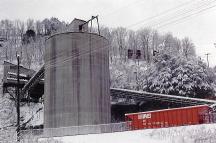 One of the distinguishing aspects of growing up in a traditional setting is that one is probably able to experience only a limited range of instrumental music in ones childhood. Our greatest traditional musicians seem to be individuals blessed with extraordinary native talents who have directed their musical sensibilities towards the span of melody that was available to them. Had circumstances permitted, a Snake Chapman could have easily become a great composer or classical violinist. As it is, in his hands a form of expression as elementary as a sixteen bar fiddle tune becomes a concentrated marvel of delicate nuance (I think revivalist attempts to duplicate traditional fiddling often fall flat simply because the wide range of stuff we hear in everyday life deadens the ear somewhat to the detail required in a fiddle tune). Aaron Copeland derived his Rodeo suite from the 'thirties playing of another Kentucky fiddler, William Stepp. To my tastes at least, the Stepp recording represents the greater musical accomplishment. Indeed, I believe that the very manner in which our rural people have managed to create personal and engaging forms of music from a limited pallet of materials represents a cheering affirmation of the higher capacities of the human spirit. I hope the listener will be able to respond to the music in our series in this fashion.
One of the distinguishing aspects of growing up in a traditional setting is that one is probably able to experience only a limited range of instrumental music in ones childhood. Our greatest traditional musicians seem to be individuals blessed with extraordinary native talents who have directed their musical sensibilities towards the span of melody that was available to them. Had circumstances permitted, a Snake Chapman could have easily become a great composer or classical violinist. As it is, in his hands a form of expression as elementary as a sixteen bar fiddle tune becomes a concentrated marvel of delicate nuance (I think revivalist attempts to duplicate traditional fiddling often fall flat simply because the wide range of stuff we hear in everyday life deadens the ear somewhat to the detail required in a fiddle tune). Aaron Copeland derived his Rodeo suite from the 'thirties playing of another Kentucky fiddler, William Stepp. To my tastes at least, the Stepp recording represents the greater musical accomplishment. Indeed, I believe that the very manner in which our rural people have managed to create personal and engaging forms of music from a limited pallet of materials represents a cheering affirmation of the higher capacities of the human spirit. I hope the listener will be able to respond to the music in our series in this fashion.
Mark Wilson - 24.10.10
Article MT259
Site designed and maintained by Musical Traditions Web Services Updated: 24.10.10
 Such assurances greatly reduced the ever-present fears of exploitation and usually allowed us to plan our projects in close consultation with our artists. To be sure, we always tried to emphasize local and endangered material over more common fare, a fact that worried some of our musicians in the early years. Today some of those same recordings have allowed younger musicians in those same regions to reclaim some of their pioneer heritage and so we rarely encounter such criticisms any longer.
Such assurances greatly reduced the ever-present fears of exploitation and usually allowed us to plan our projects in close consultation with our artists. To be sure, we always tried to emphasize local and endangered material over more common fare, a fact that worried some of our musicians in the early years. Today some of those same recordings have allowed younger musicians in those same regions to reclaim some of their pioneer heritage and so we rarely encounter such criticisms any longer.

 I might especially mention in this regard J P and Annadeene Fraley, Buddy Thomas, Roger Cooper, Gordon MacLean, Doug MacPhee, Theresa Morrison, Vince MacLean, Bob Holt and Dwight Lamb. The best part of this whole endeavor was getting to know this wonderful group of people.
I might especially mention in this regard J P and Annadeene Fraley, Buddy Thomas, Roger Cooper, Gordon MacLean, Doug MacPhee, Theresa Morrison, Vince MacLean, Bob Holt and Dwight Lamb. The best part of this whole endeavor was getting to know this wonderful group of people.
 Originally, the term 'folk music' and its cognate, 'folk tale', were introduced in the early nineteenth century by scholars like the brothers Grimm as a means of labeling forms of music that were transmitted by the 'folk process' - that is, where the musicians learn the bulk of their repertories from local sources through oral transmission rather than from written or recorded sources. Just as importantly from the viewpoint of musical psychology, a 'folk musician' typically expects to find his or her audience locally as well - a fiddler strives to play for the local dances, not to appear in vaudeville or the concert hall; a singer's ambitions reach only as far as singing for her children or for fellow miners during a lunch break. This basic modesty of intent is closely connected, in my opinion, with much of the music's charm.
Originally, the term 'folk music' and its cognate, 'folk tale', were introduced in the early nineteenth century by scholars like the brothers Grimm as a means of labeling forms of music that were transmitted by the 'folk process' - that is, where the musicians learn the bulk of their repertories from local sources through oral transmission rather than from written or recorded sources. Just as importantly from the viewpoint of musical psychology, a 'folk musician' typically expects to find his or her audience locally as well - a fiddler strives to play for the local dances, not to appear in vaudeville or the concert hall; a singer's ambitions reach only as far as singing for her children or for fellow miners during a lunch break. This basic modesty of intent is closely connected, in my opinion, with much of the music's charm.
 To my ears at least, the music of the revivalists has become rather ingrown, for they learn mainly amongst themselves, and frequently lacks the virtues that supply genuine traditional music with its special elan. For example, the fiddle playing one often hears in these circles ranges from the bland to the pointlessly frenetic, interpretations that all grow from a failure to appreciate the intrinsic subtleties of the American dance tradition (I've heard more than one puzzled traditional player characterize these efforts as "hippy fiddle music").
To my ears at least, the music of the revivalists has become rather ingrown, for they learn mainly amongst themselves, and frequently lacks the virtues that supply genuine traditional music with its special elan. For example, the fiddle playing one often hears in these circles ranges from the bland to the pointlessly frenetic, interpretations that all grow from a failure to appreciate the intrinsic subtleties of the American dance tradition (I've heard more than one puzzled traditional player characterize these efforts as "hippy fiddle music").
 One finds much speculative musing on this subject, but much of this literature strikes me as wildly distorted and romanticized. Most of the performers in our series are older white musicians of Anglo-American stock that were raised in rural areas before the advent of electrification. It has not been sufficiently appreciated, I believe, how rich a story these people can tell us about the history of earlier forms of black music. But, in fact, the information they provide strongly suggests a long history of an ongoing musical evolution driven by a productive cooperation between the races. The true history of the roots of ragtime and so forth turns out to be vastly more nuanced than the unsubstantiated fantasies of the commentators suggests.
One finds much speculative musing on this subject, but much of this literature strikes me as wildly distorted and romanticized. Most of the performers in our series are older white musicians of Anglo-American stock that were raised in rural areas before the advent of electrification. It has not been sufficiently appreciated, I believe, how rich a story these people can tell us about the history of earlier forms of black music. But, in fact, the information they provide strongly suggests a long history of an ongoing musical evolution driven by a productive cooperation between the races. The true history of the roots of ragtime and so forth turns out to be vastly more nuanced than the unsubstantiated fantasies of the commentators suggests.
 Musically, Rock Andy - and almost all the other tunes that 'Doc' Chapman played - seem sui generis to nineteenth century America: they represent musical forms that unlike anything familiar in either Scots-Irish tradition or contemporary Southern fiddling. Rather we seem in Rock Andy to witness the emergence of a new transitional strain in music, born on American soil through the cooperation of black and white musicians.
Musically, Rock Andy - and almost all the other tunes that 'Doc' Chapman played - seem sui generis to nineteenth century America: they represent musical forms that unlike anything familiar in either Scots-Irish tradition or contemporary Southern fiddling. Rather we seem in Rock Andy to witness the emergence of a new transitional strain in music, born on American soil through the cooperation of black and white musicians.
 Talking to our source musicians has brought home to us an appreciation of the great difficulties that a novice 'folk' fiddler often encountered in wanting to learn music without the assistance of a score or tape recordings; it often happened that the musician that one most wished to emulate was a passing stranger that one would never hear again. The luxury of being able to hear a novel tune played at great length - fifteen minutes or more - by an African-American at a public dance was a great boon to the budding musician and undoubtedly served as one of the most important means by which new music spread across the South. This transmission pattern, as much as anything, explains why the old nineteenth century tunes are so well remembered by our present day rural populations and why so much black/white musical exchange is evident in this music.
Talking to our source musicians has brought home to us an appreciation of the great difficulties that a novice 'folk' fiddler often encountered in wanting to learn music without the assistance of a score or tape recordings; it often happened that the musician that one most wished to emulate was a passing stranger that one would never hear again. The luxury of being able to hear a novel tune played at great length - fifteen minutes or more - by an African-American at a public dance was a great boon to the budding musician and undoubtedly served as one of the most important means by which new music spread across the South. This transmission pattern, as much as anything, explains why the old nineteenth century tunes are so well remembered by our present day rural populations and why so much black/white musical exchange is evident in this music.
 The exact rationale for this strange focus eludes me. Many of the professional folklorists with whom I've talked clearly labor under the false impression that in some library somewhere there already exists an adequate repository of American fiddle music. This is not the case at all - our libraries possess very spotty and haphazardly gathered materials, collected by individuals who usually lacked preparation for dealing with instrumental music adequately (this is true even of giants like Alan Lomax). The written records are even more incomplete and the scholars who persist in studying only these rather than interviewing living fiddlers often frame quite faulty hypotheses about tune transmission, as we witnessed in the Cantwell case.
The exact rationale for this strange focus eludes me. Many of the professional folklorists with whom I've talked clearly labor under the false impression that in some library somewhere there already exists an adequate repository of American fiddle music. This is not the case at all - our libraries possess very spotty and haphazardly gathered materials, collected by individuals who usually lacked preparation for dealing with instrumental music adequately (this is true even of giants like Alan Lomax). The written records are even more incomplete and the scholars who persist in studying only these rather than interviewing living fiddlers often frame quite faulty hypotheses about tune transmission, as we witnessed in the Cantwell case.
 What bothered me immensely was the manner in which the traditional musicians who actually recorded the music were described by some of the essayists in the accompanying booklet, viz. as bizarre and obsessive representatives of some morbid American psychology. As someone who had the privilege of knowing a number of the performers on the Folkways collection personally, I am appalled by such characterizations of folks who, in most respects, were unlike one another as one can imagine but were nonetheless all decent and sensible people. None of them conformed at all to the booklet's stereotypes. What has really occurred is that the music has been undeservedly gilded according to the exaggerated and stylized conceits of modern rock sensibility.
What bothered me immensely was the manner in which the traditional musicians who actually recorded the music were described by some of the essayists in the accompanying booklet, viz. as bizarre and obsessive representatives of some morbid American psychology. As someone who had the privilege of knowing a number of the performers on the Folkways collection personally, I am appalled by such characterizations of folks who, in most respects, were unlike one another as one can imagine but were nonetheless all decent and sensible people. None of them conformed at all to the booklet's stereotypes. What has really occurred is that the music has been undeservedly gilded according to the exaggerated and stylized conceits of modern rock sensibility.
 One of the distinguishing aspects of growing up in a traditional setting is that one is probably able to experience only a limited range of instrumental music in ones childhood. Our greatest traditional musicians seem to be individuals blessed with extraordinary native talents who have directed their musical sensibilities towards the span of melody that was available to them. Had circumstances permitted, a Snake Chapman could have easily become a great composer or classical violinist. As it is, in his hands a form of expression as elementary as a sixteen bar fiddle tune becomes a concentrated marvel of delicate nuance (I think revivalist attempts to duplicate traditional fiddling often fall flat simply because the wide range of stuff we hear in everyday life deadens the ear somewhat to the detail required in a fiddle tune). Aaron Copeland derived his Rodeo suite from the 'thirties playing of another Kentucky fiddler, William Stepp. To my tastes at least, the Stepp recording represents the greater musical accomplishment. Indeed, I believe that the very manner in which our rural people have managed to create personal and engaging forms of music from a limited pallet of materials represents a cheering affirmation of the higher capacities of the human spirit. I hope the listener will be able to respond to the music in our series in this fashion.
One of the distinguishing aspects of growing up in a traditional setting is that one is probably able to experience only a limited range of instrumental music in ones childhood. Our greatest traditional musicians seem to be individuals blessed with extraordinary native talents who have directed their musical sensibilities towards the span of melody that was available to them. Had circumstances permitted, a Snake Chapman could have easily become a great composer or classical violinist. As it is, in his hands a form of expression as elementary as a sixteen bar fiddle tune becomes a concentrated marvel of delicate nuance (I think revivalist attempts to duplicate traditional fiddling often fall flat simply because the wide range of stuff we hear in everyday life deadens the ear somewhat to the detail required in a fiddle tune). Aaron Copeland derived his Rodeo suite from the 'thirties playing of another Kentucky fiddler, William Stepp. To my tastes at least, the Stepp recording represents the greater musical accomplishment. Indeed, I believe that the very manner in which our rural people have managed to create personal and engaging forms of music from a limited pallet of materials represents a cheering affirmation of the higher capacities of the human spirit. I hope the listener will be able to respond to the music in our series in this fashion.